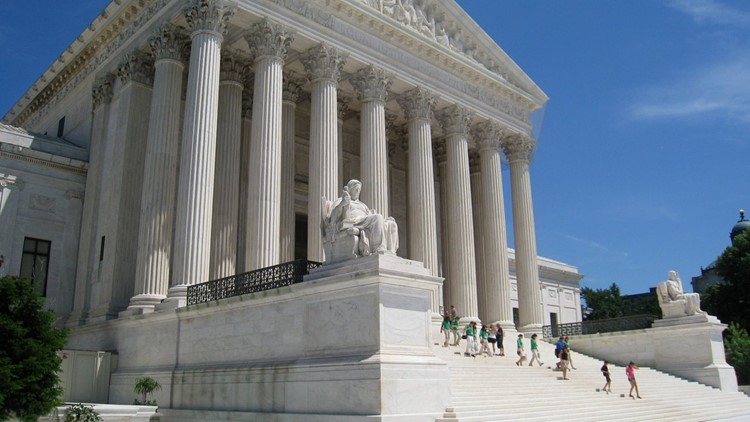CBS News – The Supreme Court on Wednesday limited the president’s power to fill high-level vacancies with temporary appointments, ruling in favor of Senate Republicans in their partisan clash with President Obama.
The court’s first-ever case involving the Constitution’s recess appointments clause ended in a unanimous decision holding that Mr. Obama’s appointments to the National Labor Relations Board in 2012 without Senate confirmation were illegal. Mr. Obama invoked the Constitution’s provision giving the president the power to make temporary appointments when the Senate is in recess.
Problem is, the court said, the Senate was not actually in a formal recess when Obama acted.
The administration had argued that the Senate was on an extended holiday break and that the brief sessions it held every three days were a sham that was intended to prevent him from filling seats on the NLRB.
The justices rejected that argument Wednesday.
“For purposes of the Recess Appointments Clause, the Senate is in session when it says it is, provided that, under its own rules, it retains the capacity to transact Senate business,” Justice Stephen Breyer wrote for the majority.
At the same time, the court acknowledged the broad powers the president retains to make recess appointments, dating back centuries.
“Presidents have made recess appointments to preexisting vacancies for two centuries, and the Senate as a body has not countered this practice for nearly three-quarters of a century, perhaps longer,” the summary of Breyer’s ruling said. “The Court is reluctant to upset this traditional practice where doing so would seriously shrink the authority that Presidents have believed existed and have exercised for so long.”
The issue of recess appointments receded in importance after the Senate’s Democratic majority changed the rules to make it harder for Republicans to block confirmation of most Obama appointees.
The White House said Thursday it was disappointed in the ruling.
“We’re of course deeply disappointed in today’s decision and reviewing it. It does preserve some elements of the president’s executive authority and he will use it,” White House spokesman Josh Earnest said. “The president in no way scaling back his efforts to make progress for the American people.”
But the ruling’s impact may be keenly felt by the White House next year if Republicans capture control of the Senate in the November election. The potential importance of the ruling lies in the Senate’s ability to block the confirmation of judges and the leaders of independent agencies like the NLRB. A federal law gives the president the power to appoint acting heads of Cabinet-level departments to keep the government running.
Still, the outcome was the least significant loss possible for the administration. The justices, by a 5-4 vote, rejected a sweeping lower court ruling against the administration that would have made it virtually impossible for any future president to make recess appointments.
The lower court held that the only recess recognized by the Constitution is the once-a-year break between sessions of Congress. It also said that only vacancies that arise in that recess could be filled. So the high court has left open the possibility that a president, with a compliant Congress, could make recess appointments in the future.
A recess appointment can last no more than two years. Recess appointees who subsequently won Senate confirmation include Chief Justice Earl Warren and Justice William Brennan, Federal Reserve Chairman Alan Greenspan, two current NLRB members and Consumer Financial Protection Bureau director Richard Cordray. Former UN Ambassador John Bolton is among recess appointees who left office because they could not win a Senate vote.
Obama has made relatively few recess appointments, 32 in his five-plus years in office, according to the Congressional Research Service. President George W. Bush made 171 such appointments over two terms and President Bill Clinton filled 139 posts that way in his eight years in office, the research service said.
But Obama was the first president to try to make recess appointments when Congress explicitly said it was not in recess. The Constitution requires that the Senate and House must get the other’s consent for a break lasting longer than three days. At the end of 2011, the Republican-controlled House would not give the Democratic-led Senate permission for a longer break.
The partisan roles were reversed during Bush’s presidency, when Senate Democrats sought ways to prevent the president from making recess appointments.
The case challenging the appointments was brought by Noel Canning, a soft drink bottling company in Yakima, Washington. The company claimed an NLRB decision against it was not valid because the board members were not properly appointed and that the board did not have enough members to do business without the improperly appointed officials.
Noel Canning prevailed in the U.S. Circuit Court of Appeals for the District of Columbia, and two other appeals courts also had ruled against recess appointments.



